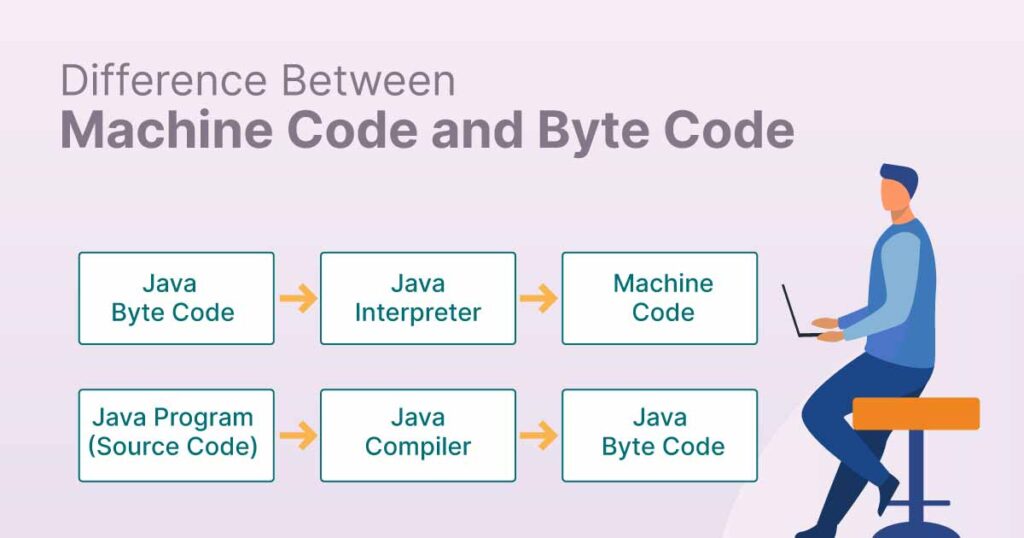In the world of programming and software development, understanding the different types of code is crucial for developers, engineers, and anyone interested in how software operates. Two important concepts in this realm are bytecode and machine code. While they serve similar purposes in the execution of programs, they are fundamentally different in their structure, purpose, and execution. In this blog post, we’ll explore the differences between bytecode and machine code, their roles in programming, and their significance in the software development process.

What is Bytecode?
Bytecode is an intermediate representation of a program that is generated by a compiler from high-level source code. It is not directly executed by the hardware but is instead designed to be executed by a virtual machine (VM), such as the Java Virtual Machine (JVM) or the Common Language Runtime (CLR) for .NET applications.
Key Characteristics of Bytecode:
- Platform Independence: Bytecode is designed to be platform-independent, meaning it can run on any device that has a compatible virtual machine. This allows developers to write code once and run it anywhere, which is a significant advantage of languages like Java.
- Intermediate Format: Bytecode serves as an intermediate step between high-level programming languages and machine code. It allows for optimizations and portability.
- Execution: Bytecode is executed by a virtual machine, which interprets or compiles it into machine code at runtime. This process can involve Just-In-Time (JIT) compilation for performance improvements.
What is Machine Code?
Machine code, on the other hand, is the lowest-level representation of a program that is directly executed by a computer’s central processing unit (CPU). It consists of binary instructions that the CPU can understand and execute without any further translation.
Key Characteristics of Machine Code:
- Hardware Specific: Machine code is specific to a particular architecture and hardware. Different CPUs have different instruction sets, meaning that machine code compiled for one type of processor will not work on another.
- Direct Execution: Machine code is executed directly by the CPU, making it the fastest form of code execution. There is no need for interpretation or further compilation.
- Binary Format: Machine code is represented in binary (0s and 1s), which is the only language that computers can understand natively.
Bytecode vs. Machine Code: A Comparison
| Feature | Bytecode | Machine Code |
|---|---|---|
| Definition | Intermediate code generated from high-level languages | Low-level code executed directly by the CPU |
| Execution | Requires a virtual machine for execution | Executed directly by the CPU |
| Portability | Platform-independent | Hardware-specific |
| Performance | Generally slower due to interpretation or JIT compilation | Fastest execution due to direct execution |
| Format | Typically represented in a compact binary format | Represented in binary (0s and 1s) |
When to Use Bytecode and Machine Code
- Bytecode:
- Bytecode is ideal for applications that require portability across different platforms. It is commonly used in languages like Java and C# where the same code can run on any device with the appropriate virtual machine. This makes it suitable for web applications, mobile apps, and cross-platform software.
- Machine Code:
- Machine code is used when performance is critical, and the application is designed for a specific hardware architecture. Systems programming, embedded systems, and performance-sensitive applications often rely on machine code for optimal execution speed.
